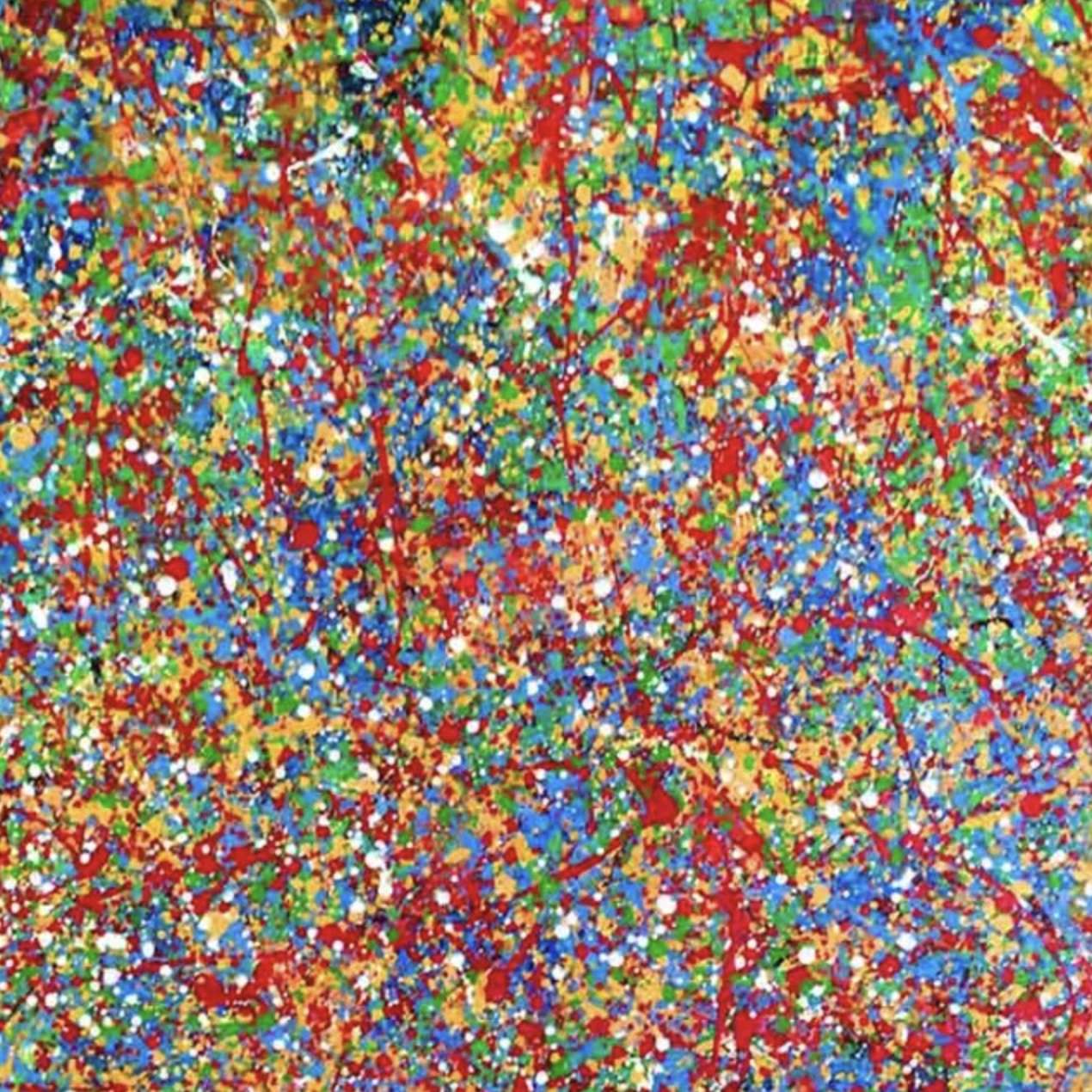Our papers are the official record of our discoveries. They allow others to build on and apply our work. Each one is the result of many months of research, so we make a special effort to make our papers clear, inspiring and beautiful, and publish them in leading journals.
- Date
- Subject
- Theme
- Journal
- Citations
- Altmetric
- SNIP
- Author
 M. Burtsev
M. Burtsev A. V. Kosyak
A. V. Kosyak J. Wang
J. Wang Y. He
Y. He O. Gamayun
O. Gamayun E. Sobko
E. Sobko F. Sheldon
F. Sheldon F. Caravelli
F. Caravelli I. Shkredov
I. Shkredov A. Stepanenko
A. Stepanenko A. Sarikyan
A. Sarikyan A. Esterov
A. Esterov A. Ochirov
A. Ochirov M. Reeves
M. Reeves T. Fink
T. Fink G. Caldarelli
G. Caldarelli R. Hannam
R. Hannam A. Coolen
A. Coolen O. Dahlsten
O. Dahlsten A. Mozeika
A. Mozeika M. Bardoscia
M. Bardoscia P. Barucca
P. Barucca M. Rowley
M. Rowley I. Teimouri
I. Teimouri F. Antenucci
F. Antenucci A. Scala
A. Scala R. Farr
R. Farr A. Zegarac
A. Zegarac S. Sebastio
S. Sebastio B. Bollobás
B. Bollobás F. Lafond
F. Lafond D. Farmer
D. Farmer C. Pickard
C. Pickard T. Reeves
T. Reeves J. Blundell
J. Blundell A. Gallagher
A. Gallagher M. Przykucki
M. Przykucki P. Smith
P. Smith L. Pietronero
L. Pietronero

Complex systems
Complex digital cities
A complexity-science approach to digital twins of cities views them as self-organising phenomena, instead of machines or logistic systems.

Statistical physics
Network renormalization
Applying diffusion-based graph operators to complex networks identifies the proper spatiotemporal scales by overcoming small-world effects.

Network theory
True scale-free networks
The underlying scale invariance properties of naturally occurring networks are often clouded by finite-size effects due to the sample data.

Statistical physics
Coexistence in diverse ecosystems
Scale-invariant plant clusters explain the ability for a diverse range of plant species to coexist in ecosystems such as Barra Colorado.
Network theory
Physics of financial networks
Statistical physics contributes to new models and metrics for the study of financial network structure, dynamics, stability and instability.
Financial risk
Risky bank interactions
Networks where risky banks are mostly exposed to other risky banks have higher levels of systemic risk than those with stable bank interactions.
Financial markets
Network valuation in finance
Consistent valuation of interbank claims within an interconnected financial system can be found with a recursive update of banks' equities.
Statistical physics
Physics of networks
Statistical physics harnesses links between maximum entropy and information theory to capture null model and real-world network features.
Complex networks
Information asymmetry
Network users who have access to the network’s most informative node, as quantified by a novel index, the InfoRank, have a competitive edge.
Financial networks
From ecology to finance
Bipartite networks model the structures of ecological and economic real-world systems, enabling hypothesis testing and crisis forecasting.
Mathematical medicine
Bayesian analysis of medical data
Bayesian networks describe the evolution of orthodontic features on patients receiving treatment versus no treatment for malocclusion.
Network theory
Debunking in a world of tribes
When people operate in echo chambers, they focus on information adhering to their system of beliefs. Debunking them is harder than it seems.
Financial networks
Bipartite trade network
A new algorithm unveils complicated structures in the bipartite mapping between countries and products of the international trade network.
Financial markets
Financial network reconstruction
Statistical mechanics concepts reconstruct connections between financial institutions and the stock market, despite limited data disclosure.
Financial risk
Pathways towards instability
Processes believed to stabilize financial markets can drive them towards instability by creating cyclical structures that amplify distress.
Complex networks, Financial risk
Non-linear distress propagation
Non-linear models of distress propagation in financial networks characterise key regimes where shocks are either amplified or suppressed.
Financial risk
Immunisation of systemic risk
Targeted immunisation policies limit distress propagation and prevent system-wide crises in financial networks according to sandpile models.
Financial risk
The price of complexity
Increasing the complexity of the network of contracts between financial institutions decreases the accuracy of estimating systemic risk.
Network theory
Cascades in flow networks
Coupled distribution grids are more vulnerable to a cascading systemic failure but they have larger safe regions within their networks.
Percolation theory
Self-organising adaptive networks
An adaptive network of oscillators in fragmented and incoherent states can re-organise itself into connected and synchronized states.
Financial markets
News sentiment and price dynamics
News sentiment analysis and web browsing data are unilluminating alone, but inspected together, predict fluctuations in stock prices.
Network theory
Communities in networks
A new tool derived from information theory quantitatively identifies trees, hierarchies and community structures within complex networks.
Financial markets
Effect of Twitter on stock prices
When the number of tweets about an event peaks, the sentiment of those tweets correlates strongly with abnormal stock market returns.
Complex networks
Democracy in networks
Analysis of the hyperbolicity of real-world networks distinguishes between those which are aristocratic and those which are democratic.
Complex networks
Collective attention to politics
Tweet volume is a good indicator of political parties' success in elections when considered over an optimal time window so as to minimise noise.
Financial risk
DebtRank and shock propagation
A dynamical microscopic theory of instability for financial networks reformulates the DebtRank algorithm in terms of basic accounting principles.
Financial risk, Network theory
Fragility of the interbank network
The speed of a financial crisis outbreak sets the maximum delay before intervention by central authorities is no longer effective.
Financial risk
Networks of credit default swaps
Time series data from networks of credit default swaps display no early warnings of financial crises without additional macroeconomic indicators.
Network theory
Self-healing complex networks
The interplay between redundancies and smart reconfiguration protocols can improve the resilience of networked infrastructures to failures.
Financial risk
Default cascades in networks
The optimal architecture of a financial system is only dependent on its topology when the market is illiquid, and no topology is always superior.
Economic complexity
Metrics for global competitiveness
A new non-monetary metric captures diversification, a dominant effect on the globalised market, and the effective complexity of products.
Economic complexity
Measuring the intangibles
Coupled non-linear maps extract information about the competitiveness of countries to the complexity of their products from trade data.
Network theory
The temperature of networks
A new concept, graph temperature, enables the prediction of distinct topological properties of real-world networks simultaneously.
Network theory
Scales in weighted networks
Information theory fixes weighted networks’ degeneracy issues with a generalisation of binary graphs and an optimal scale of link intensities.
Financial networks
Interbank controllability
Complex networks detect the driver institutions of an interbank market and ascertain that intervention policies should be time-scale dependent.
Financial networks
Reconstructing credit
New mathematical tools can help infer financial networks from partial data to understand the propagation of distress through the network.
Financial networks
Complex derivatives
Network-based metrics to assess systemic risk and the importance of financial institutions can help tame the financial derivatives market.
Financial risk
Bootstrapping topology and risk
Information about 10% of the links in a complex network is sufficient to reconstruct its main features and resilience with the fitness model.
Network theory
Weighted network evolution
A statistical procedure identifies dominant edges within weighted networks to determine whether a network has reached its steady state.
Economic complexity
Network analysis of export flows
Network theory finds unexpected interactions between the number of products a country produces and the number of countries producing each product.
Economic complexity
Metric for fitness and complexity
A quantitative assessment of the non-monetary advantage of diversification represents a country’s hidden potential for development and growth.
Mathematical medicine
Networks for medical data
Network analysis of diagnostic data identifies combinations of the key factors which cause Class III malocclusion and how they evolve over time.
Financial markets
Search queries predict stocks
Analysis of web search queries about a given stock, from the seemingly uncoordinated activity of many users, can anticipate the trading peak.
Network theory
Robust and assortative
Spectral analysis shows that disassortative networks exhibit a higher epidemiological threshold and are therefore easier to immunize.
Network theory
Clustering inverted
Edge multiplicity—the number of triangles attached to edges—is a powerful analytic tool to understand and generalize network properties.